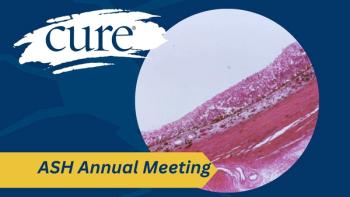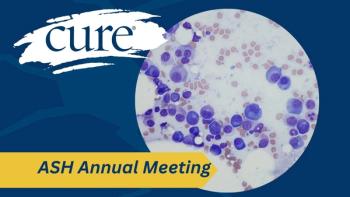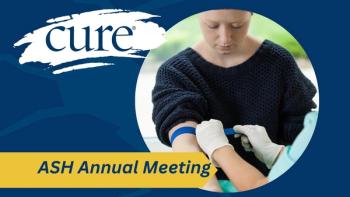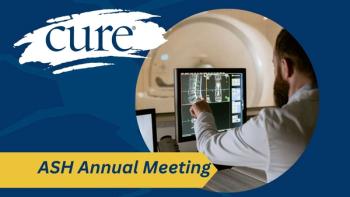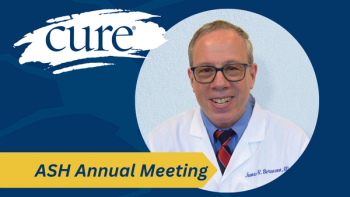
Facing Breast and Lung Cancer Led Me to a New Purpose in Life
Key Takeaways
- Genetic predisposition played a significant role in the author's cancer journey, influencing treatment decisions and outcomes.
- The narrative highlights the emotional and physical challenges of cancer treatment, including mastectomy, chemotherapy, and immunotherapy.
I was diagnosed with breast cancer, then lung cancer 17 years later — and both ultimately led me to make meaningful, positive changes in my life.
I want to live to be an old lady and die of something other than cancer. Those were the words I used, more than twenty years ago, explaining to loved ones and friends why I had chosen mastectomy and reconstruction as treatment for duct carcinoma in situ (DCIS).
DCIS is the earliest stage of breast cancer, so it wasn’t astounding to me that they felt confused or even asked, “Why?”
However, there is a lot more to my cancer story, as well as about how I chose mastectomy, over twenty-five days of radiation followed by five years of taking Tamoxifen, the standard procedure for treating DCIS at that time. Tamoxifen was already well-known to reduce the likelihood of recurrence of breast cancer in women who had previously been afflicted by it.
I’d worried enough about breast cancer. It had claimed the lives of my great-grandmother, my grandmother, and my mother. An educated guess told me that it wasn’t a coincidence that the three of them had all been diagnosed with breast cancer and all died of that disease.
It's now known that cancer is often a genetic disorder, and in families where many members have suffered from the diseases, the trend will likely continue into the future. I was at risk of my breast cancer recurring, and by choosing mastectomy, I took away almost all of that risk.
Almost immediately after I started to heal, I suffered a potentially dangerous infection in one of my implants, which delayed my recovery time by months. As I took my antibiotics and had multiple minor surgeries, I thought about my mom and my three daughters, the chances my girls might have breast cancer in their futures. I was hugely thankful that I had survived. I thought about what I had been through and what I wanted in my future.
By May, I was almost completely well, and on Mother’s Day 2002, my daughters and I participated in the Susan G. Komen, Race for the Cure (for breast cancer), which we had done regularly since my mother was diagnosed. That day I was recognized as a survivor in a beautiful ceremony, and I spent a wonderful day with my three high school and college-aged girls.
And I made my decision. In the near future, I would resign my job as a coordinator in an adult literacy program and expand my part-time tutoring work; I’d grow it into a small business. Suzanne the Tutor has recently celebrated its 25th anniversary as a successful business.
So often I’d thought about the role of cancer in my life: From the time I’d heard that Grandma had survived breast cancer in the 1940s (it did recur 35 years later), to my diagnosis with DCIS, and decision to have the mastectomy. Yet, it had never occurred to me that I would be diagnosed with another cancer.
Sixteen years had passed since the 2002 Race for the Cure, and my life had changed so much. Two of my daughters were married; the third engaged. I was a grandmother of four and two more by marriage.
Then late that year, I was in a minor car accident which resulted in a trip to the Emergency Room at a nearby hospital. The report on one of the tests done was of my thyroid glands, so it said, but was actually of my lungs; a huge mistake which probably contributed to saving my life. My PCP, Dr. C., sent me to have a CT of the lungs which confirmed two relatively small tumors, one on each lung.
Two extremely painful biopsies followed, and taught me firsthand that bones (ribs in my case) cannot be anesthetized. Again, malignant cells were found.
I had lung cancer. But how was it possible? I had never smoked or been exposed to secondhand smoke.
Of course, I remembered that I wanted to die of something other than cancer. I was able to calm down and accept my circumstances by the time I met with Dr. L., the thoracic surgeon. Dr. C had sent me to him; I liked and respected him immediately.
I would need two surgeries to remove the tumors, but the only follow-up treatment would be annual scans for five years. I thought, well… ok, I can do that. The first surgery went well, but I was within a week of surgery number two when I received an evening phone call. Dr. L told me that lymph nodes had been removed from my chest at surgery number one, and more than half of the nodes had been cancerous. That was a very bad day.
Then, at my final office visit with Dr. L, my husband asked the doctor, “What is her chance of surviving?” Dr. L paused then responded, “30%, but there is good news too. Your PDL1 is 60% which makes you a good candidate for immunotherapy.” I had the second surgery, then was sent to begin cisplatin chemotherapy.
I was terrified; I’d watched the effect of 1990’s chemo on my mother, an extremely strong woman. Yet, Dr. G, my oncologist, was a real fighter for his patients. I held on to a tiny bit of hope.
Then, I hit the low point of my treatment journey during my first round of chemo. The third night after my infusions, I slept restlessly, going through nausea, vomiting, and diarrhea. As I lay in the bed, I dreaded my husband going to work in the morning and leaving me alone. I had a fever, and it reached a high of 101 degrees, permitting me to get an appointment to see a doctor in the cancer center the next day. I was checked out, and my diagnosis: “dehydration, none of your symptoms are unusual.”
My confidence rose; I could beat this. I decided I would do all I could to pursue wellness and start by telling my husband I needed him to work from home until the end of my chemo. I completed chemo as planned, then went on to twenty-five days of radiation therapy at a closer medical center, getting the opportunity to ring the bell to celebrate the completion of radiation. Finally, I received monthly infusions of Imfinzi immunotherapy for one year and was deemed in remission, but it was early 2020… and by mid-March, the world had closed down for the coronavirus pandemic. I found it extremely difficult to return to normal life when normal life was in an unprecedented condition.
It took me almost six months to overcome depression, anxiety, and to start to feel like the former lung cancer patient who had fought for her life and, if not quite won, become cancer-free, to appreciate my remission.
Looking back to when Dr. C had called me with the news that the tumors in my lungs were malignant, our conversation was more like that of a father to a daughter than a doctor to a patient. Before it ended, he said to me, “Keep in mind that there will be many ups and downs in the near future.” In my situation, that continued until late 2020; and there were many downs.
On the good days, I thanked God over and over as well as all the people who had been with me on that roller coaster ride. I knew I couldn’t have done it alone, and I wanted to become more social, more caring, and giving to others. I wanted to get to know my extended family and become more involved in my church, and especially to be there for those following me in cancer journeys.
Once I’d completed chemo, I made a large, for me, donation to the American Lung Association, the start of my volunteer involvement with ALA. I’ve done fundraising for the annual Lung Force Walk, leading our team, Sue’s Prayer Army, for five years now, and have no intention of stopping.
Two of my first cousins were diagnosed with cancer in the early 2020s. I’ve developed new relationships with them. In early June of last year, Larry and I reunited after about thirty years and brought together ten other family members who had not seen each other in many years.
As I sat in church one Sunday in late 2021, I decided to become involved in the cancer support group there, despite the fact that I had never thought of myself as a support group person.
But it didn’t matter. This is now my new normal. I’m so thankful to be alive.
For more news on cancer updates, research and education, don’t forget to

